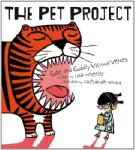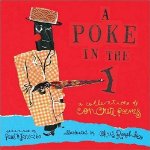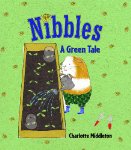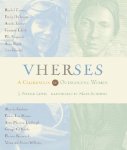When I was around eight years old I went on a fairy tale jag. I read every fairy tale I could get my hands on, and my godmother got me a set of books that I loved. In each book the author,
Ruth Manning-Sanders, focused on fairy tales about one kind of magical being. There was a book about giants, one about magical animals, one about dragons, one about witches, and so on. The author retold the stories in creative ways giving readers wonderful descriptions of places and characters. In today's poetry title you are going to meet some familiar fairy tale characters, but their 'voices' are not going to be what you are used to. Have fun!
Jane Yolen and Rebecca Kai Dotlitch
Illustrated by Matt Mahurin
Poetry Picture Book
For ages 7 to 10
Boyds Mills Press, 2013, 978-1-59078-867-7
Fairy tales have been delighting and terrifying children
for generations. The stories have played important roles in popular culture and
many have been turned into plays, musicals, and films. The one thing that they
have in common is that the “good guys” almost always win, and the “bad guys”
usually get their just desserts. In a world that is full of chaos, unknowns,
and unhappy endings, fairy tales can help us to feel comforted and secure.
Jane Yolen, the author and
poet, clearly loves fairy tales, and she has written many such stories over the
years. For this poetry collection she has collaborated with children’s book
author and poet Rebecca Kai Dotlich. Together they have created poems that
allow young readers to look at some classic fairy tales in a new way. Instead
of telling the stories in the third person, which is the way most fairy tales
are presented, they use the voices of the characters in the stories to present
a fresh point of view. For every story there are two poems. Sometimes the poems
are from the point of view of one character, and sometimes we hear from two
characters.
For example, in Hansel
and Gretel, Gretel begins by talking about how she and her brother should
have guessed at once that they “were in deep, deep trouble” when they found the
witch’s house with its “chocolate doorknobs” and “marzipan bricks.” Then we
hear from Hans, who has quite a different approach. He is optimistic and says,
“No worries, no need to fear.” He is convinced that he, Hans, will be able to
save the day.
Sometimes we even hear from
characters who do not appear in the stories, characters who surely might have
popped out of the pages if someone had had thought to write them in. For
example in The Three Bears, the first poem we read allows us to hear not
just bear voices and Goldilocks voice. We also hear the voice of Officer Bruin
who has come to “view / The ruin.”
Readers of all ages who like
fairy tales are going to enjoy exploring the thirty poems in this book. It is
interesting to hear how different the voices of the characters sound and how
many perspectives there are in one tale. Readers might be tempted to try their
hand at writing some of their own fairy tale poems. What would Jack’s beanstalk
have to say about being climbed, and what would Cinderella’s glass slipper have
to say about the girl who charmed a prince?































